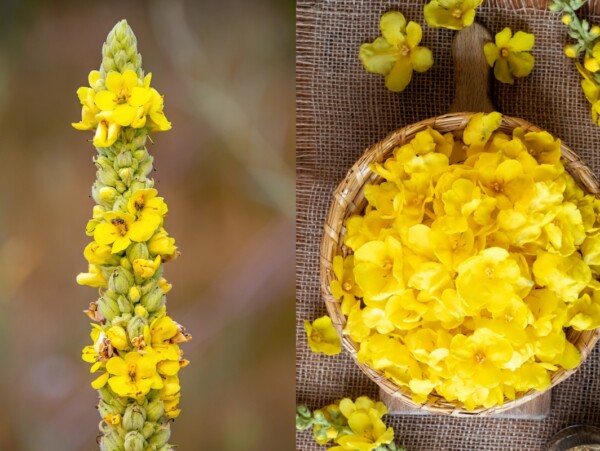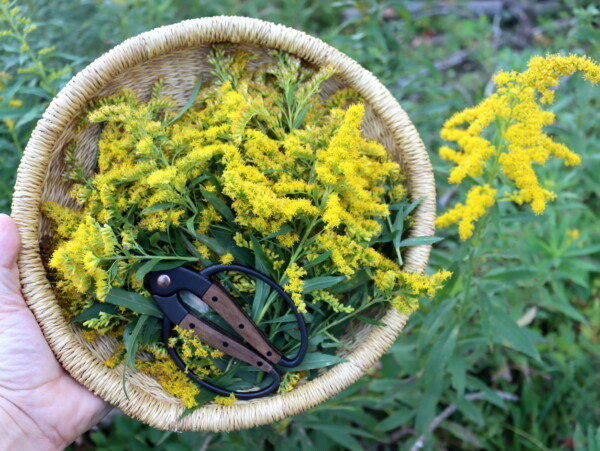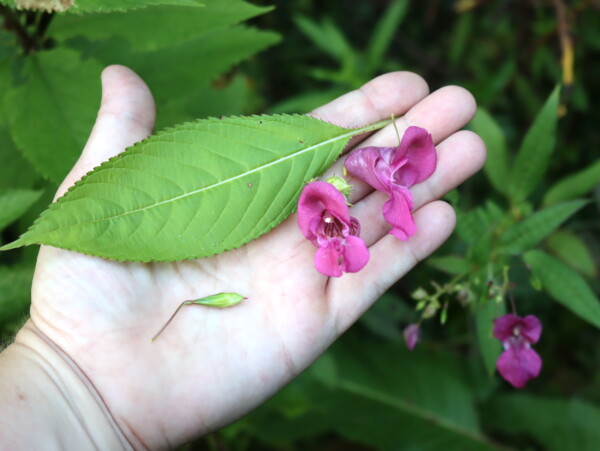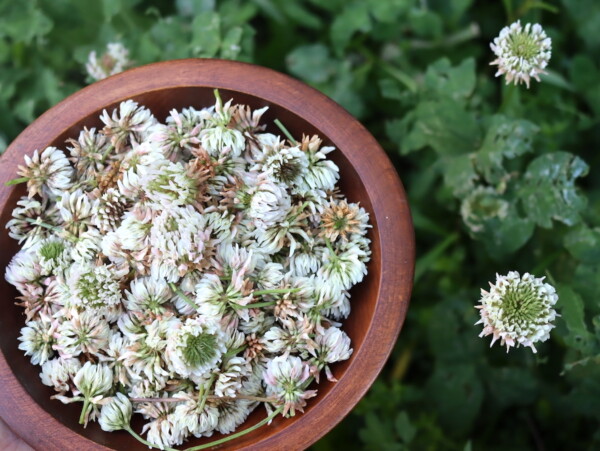Affiliate disclosure: This post may contain affiliate links. Please see our Privacy Policy.
Trout Lily is a spring ephemeral that’s easy to find in forests all over North America. It happens to be a wild edible plant that is useful blossom to root.
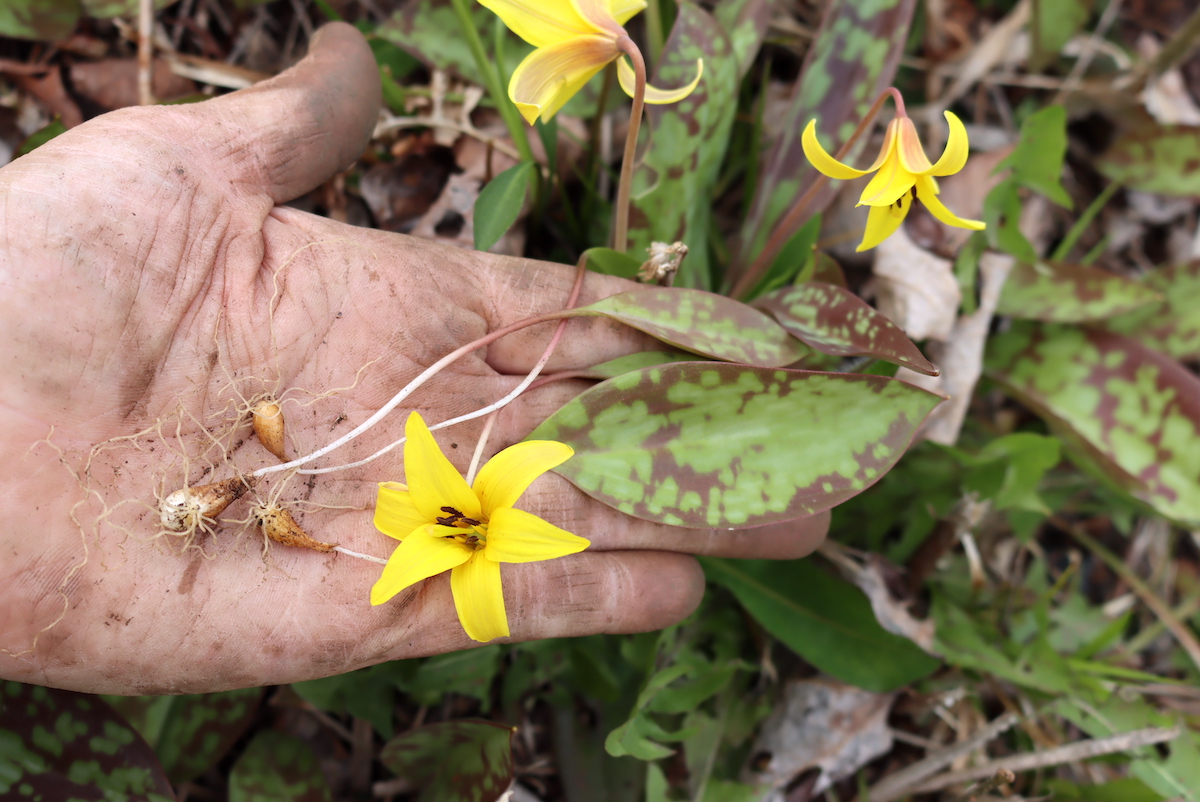
Spring ephemerals are some of the most popular wild plants, as everyone’s been cooped up all winter, and they can’t wait for spring. Foragers love finding ramps (wild leeks) and spring beauty in the woods, and the fact that they’re only around for a short time (thus the “ephemeral” part) makes it even more exciting.
Trout lilies are well known, even with non-foragers, but few people know they’re an edible wild plant.
They’re not commonly harvested these days, simply because they don’t produce all that much in the way of calories, but foraging them (in moderation) is still a fun way to connect with nature.
They require shade to thrive, and this patch I’m harvesting was growing in a recent clear-cut new home. Once the land is cut, they’ll quickly be out-competed by pasture grasses and goldenrod, so that is the perfect time to forage these fun, wild, edible plants sustainably.
They’re edible in small quantities from root to blossom, though, of course, be sure on your ID and avoid them if pregnant as they’re not well studied.
The blossoms are fun to decorate salads and pastries and have a mild floral taste.
Trout lily leaves are utterly delicious and have a sweet snap pea-like flavor with a fine texture that’d be lovely in salads (or as is). Some sources say they can be acrid, but that’s not my experience (so clearly, they vary in flavor).
The root is edible, but quite deep and a lot of work. I’m a devoted forager, and I dig a lot of roots…still, I’d say they are not worth it. They’re 6+ inches deep, incredibly tiny, and hard to clean. They also taste a bit chalky, and though they do have a mild cucumber flavor, it’s hard to justify digging them.
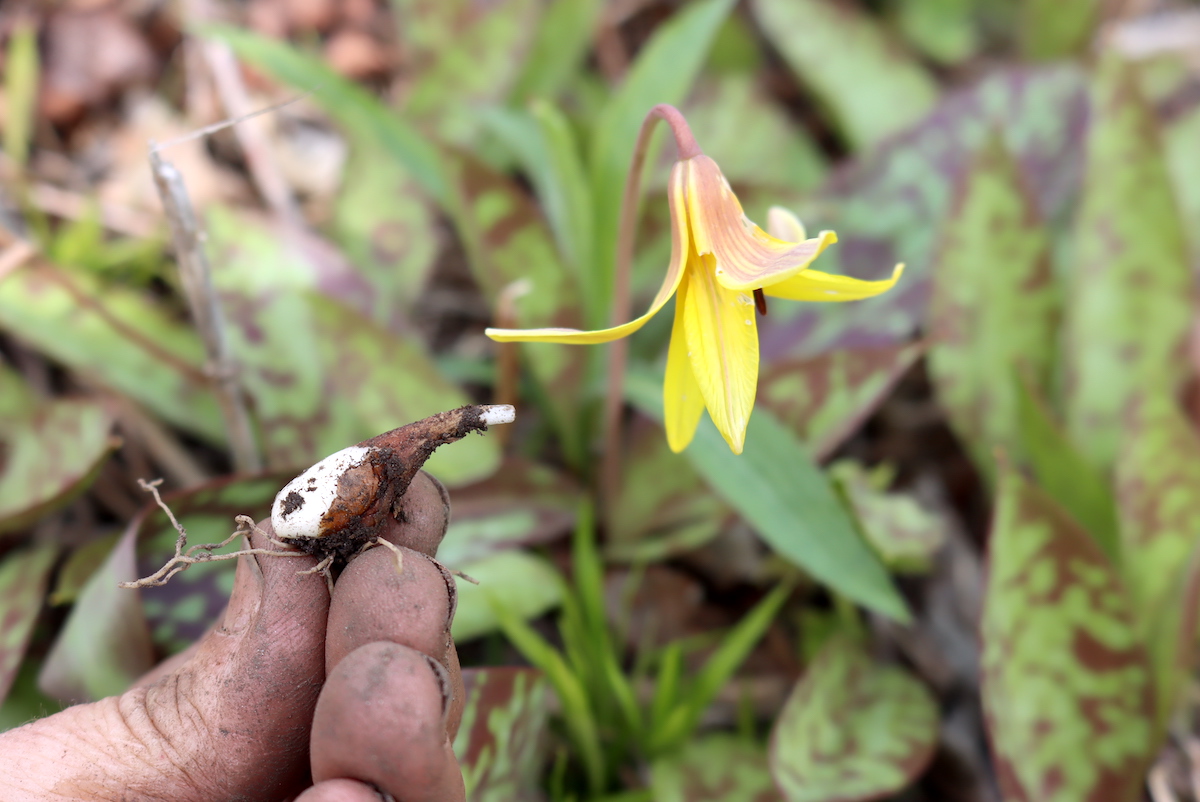
What is Trout Lily?
Tour Lily (Erythronium spp.) is a perennial herbaceous spring ephemeral flower also known as Trout Lily, Fawn Lily, Glacier Lily, or Dogtooth Violet, even though it isn’t a true violet. There are 23 Erythronium species that are native to North America. The most common species in the east is the Common Trout Lily (Erythronium americanum), while the most common species in the west is the Glacier Lily (Erythronium grandiflorum). There are six species that are native to Europe and Asia.
Some species, like the Common Trout Lily, are widespread and common, making them ideal for respectful foraging. Other species, like Taylor’s Fawn Lily (Erythronium taylorii) are rare and protected.
Is Trout Lily Edible?
While you may initially notice them for their beauty, Trout Lillies are an incredible wild food. Typically, foragers focus on the plant’s corm, which is an underground storage structure, but the leaves and flowers are also edible.
The leaves are generally considered best in spring before they’ve unfurled and are eaten raw. The flowers are also edible, but some people find the taste unpleasant.
Use caution when digging Trout Lily corms to avoid confusing them with other plants. Many species, like Jack-in-the-Pulpit (Arisaema triphyllum), produce similar-looking corms that often grow in the same areas. One bite of a Jack-in-the-Pulpit corm can cause excruciating pain and burning in the mouth. Without the help of the above-ground portions of the plant, identification can be difficult.
Don’t consume Trout Lily if you’re pregnant. The consumption of Trout Lily leaves has not been well-studied. Anecdotally, they may cause miscarriages, and some Native American groups used Trout Lily leaves and flowers to prevent conception.
Avoid eating Trout Lily in excess. Some people find excessive amounts of Trout Lily can cause nausea and vomiting.
Though none are known to be toxic, there are not good records for the edibility of every species of Trout Lily. Be sure to research regional species carefully to determine their edibility and make correct identifications.
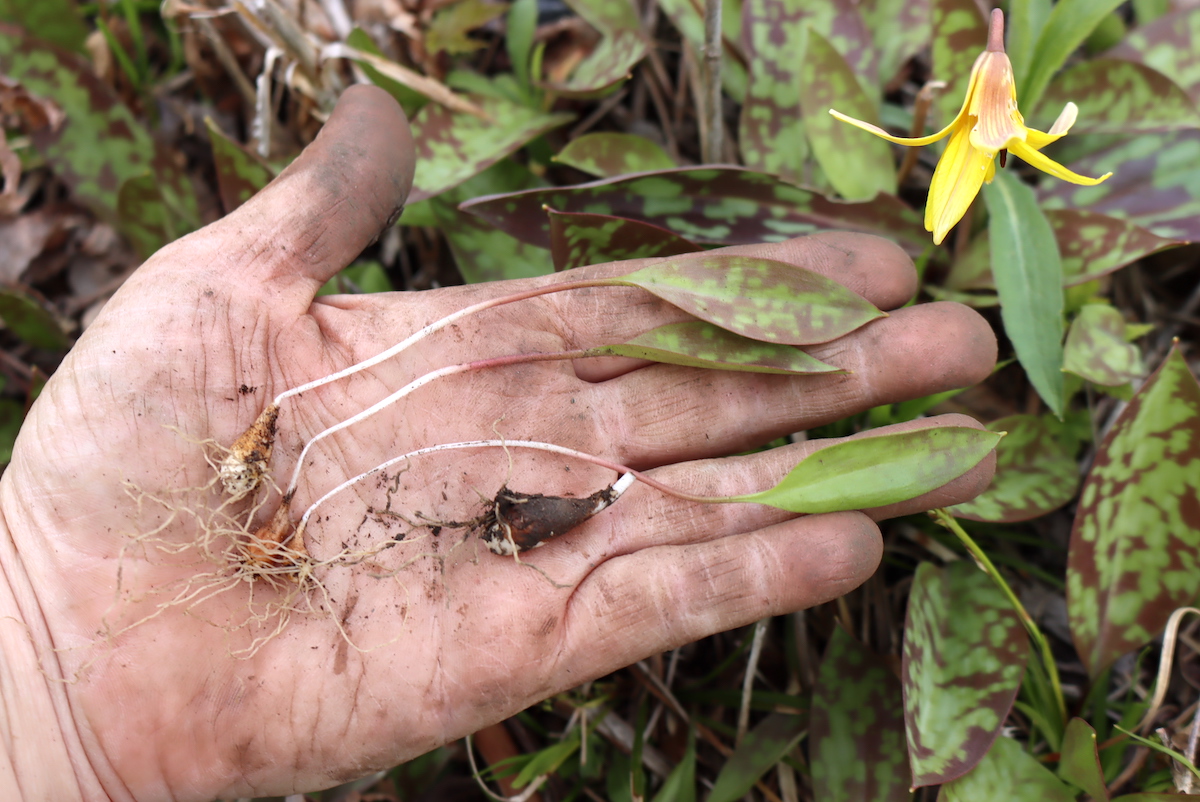
Trout Lily Medicinal Benefits
Historically, the Cherokee, Iroquois, and Haudenosaunee people used Trout Lily medicinally to reduce fevers, heal wounds, and prevent pregnancy.
Herbalists sometimes use Trout Lily leaves externally to create a poultice for wounds and sores. Internally, herbalists occasionally employ Trout Lilly as a tea to treat urinary tract issues, edema, stress, and muscle tension.
Though Trout Lillies aren’t widely used in modern herbal medicine, some researchers are working to explore their benefits further. A 2021 study found that the Siberian Fawn Lily (Erythronium sibiricum) contains polysaccharides that may be helpful in creating immunomodulatory medicines or medicine that can help to alter or regulate the immune system.
Another study, completed in 2016, explored the benefits of the Asian Fawn Lily (Erythronium japonicum), which has been used in traditional medicine in Korea and other East Asian countries. Researchers found that it reduced asthma symptoms in mice and should be researched further as an anti-asthmatic treatment. Another study, indicated that this same plant was helpful in treating abdominal cancer in mice.
Where to Find Trout Lily
Trout Lillies can be found in Europe, Asia, Southern Canada, and across much of the United States except far northern forests, dry plains, and deserts.
Trout Lillies generally thrive in rich, moist soil. They’re typical of hardwood forests, talus slopes, floodplains of small rivers and streams, alpine meadows, and open woodlands of high-elevation western forests.
When to Find Trout Lily
Trout Lillies are spring ephemerals meaning that they come up quickly in early spring and finish their growing season by early summer. In many woodland species, this adaptation allows them to take advantage of early spring light before the trees leaf out and block the sunlight. In some of the western and prairie species, this adaptation helps them take advantage of cool spring temperatures and abundant moisture before the area becomes hot and dry in summer.
This quick period of growth in early spring is when you can harvest leaves and flowers and is a good time to mark patches for later if you’re interested in harvesting the corms.
Trout Lily corms are best at two different times of the year. In the spring, they are sweet, crunchy, and tender, excellent for eating raw. They are best before the plant has sent up its leaves, so to harvest them at this stage, you’ll want to visit a patch you marked the previous year or learn to recognize the leaves as they’re still furled and just coming up.
In the summer and fall, when the leaves die back, Trout Lillies put their energy back into their corms. You can also dig the corms at this time, and they will be starchy rather than sweet but are still good.
Identifying Trout Lily
As it comes up and blooms in early spring when many other plants are still dormant, Trout Lily is often easy to spot. First, the plants’ long, usually mottled leaves appear. Quickly after leafing out, some of the plants will send up nodding flowers.
You’ll often spot the plant growing in large, dense patches where the habitat is good. This is because one of their primary methods of reproduction is through underground runners, which allows them to form these large colonies. They also spread some by seed and have a symbiotic relationship with ants known as myrmecochory. In exchange for a lipid-rich appendage on the seed, the ants disperse the seeds protecting them from predation.
Trout Lily Leaves
Trout Lillies typically have just one to two long basal, elliptic, or lanceolate leaves that taper at each end. Often younger plants have one leaf, while older flowering plants have two.
The leaves have a conspicuous crease down the center of each leaf and are 3 to 8 inches long and 1 to 1.5 inches wide in most species, including the Common Trout Lily (Erythronium americanum). Trout Lily leaves are typically soft and pliable to the touch.
Most Trout Lily species have dull green leaves with brown or grayish-purple mottling. This mottling has given the family the common names “fawn lily” and “trout lily” because it’s thought to resemble a trout’s side or a fawn’s back. However, there are a couple of exceptions, like the Avalanche Lily (Erythronium montanum) and the extremely rare Taylor’s Fawn Lily (Erythronium taylorii), which have solid green leaves.
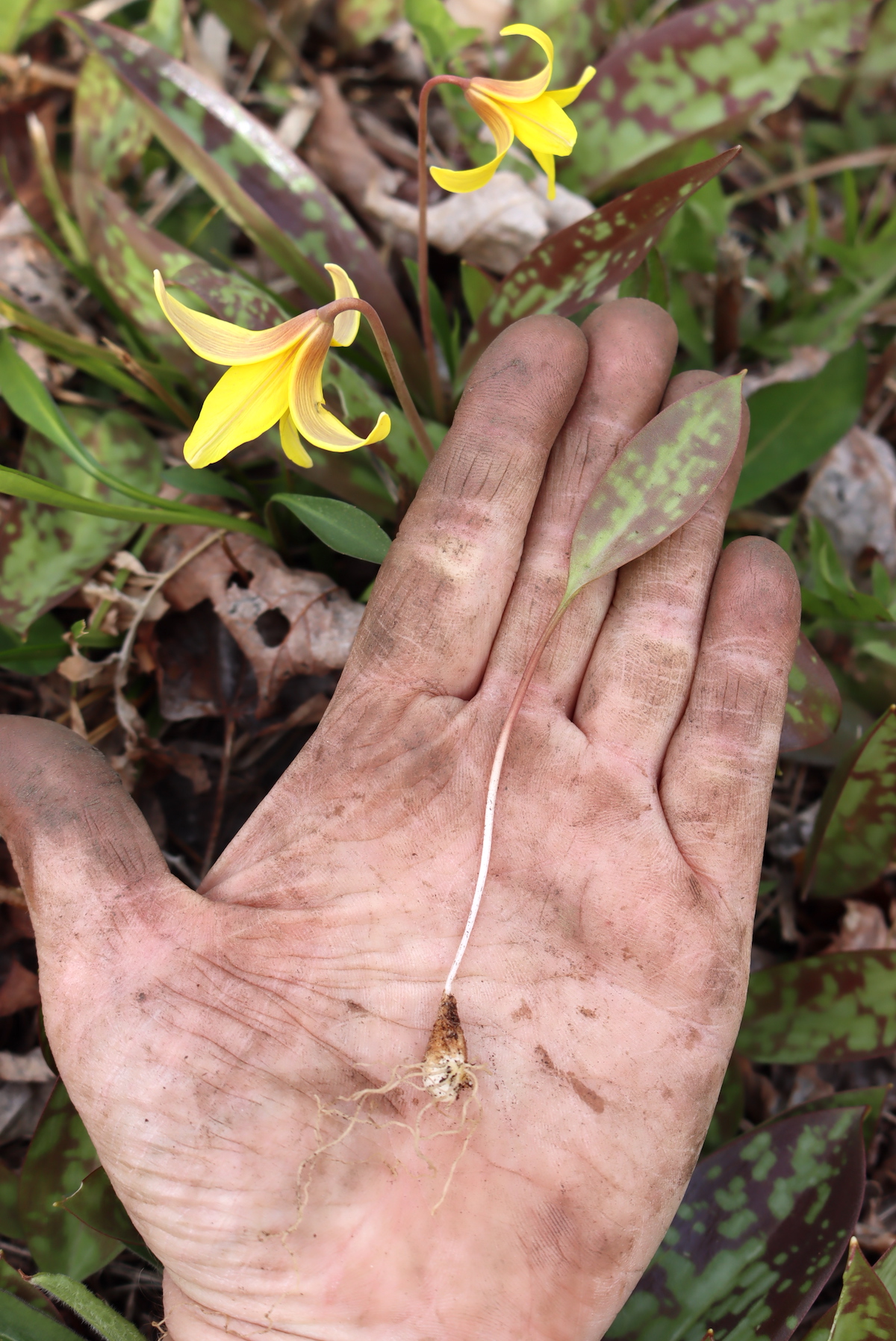
Trout Lily Stems
Trout Lillies send up flower stems from the base of the plant after several years of growth. Many species, including the Common Trout Lily (Erythronium americanum), have a single flower stem. However, some species, like the Glacier Lily (Erythronium grandiflorum), may grow multiple flower stems per plant.
In many species, this stem is 4 to 8 inches tall but may reach taller than 12 inches in larger species like the Coastal Fawn Lily (Erythronium revolutum). The stem may be green, brown, reddish, or purplish, depending on the species. At the top, the stem curves sharply, and the flower faces slightly downward or sideways.
Trout Lily Flowers
Trout Lily flowers are nodding, generally tilting slightly forward or to one side of the stem. They generally have six strongly recurved petals with conspicuous protruding stamens.
While their shapes are certainly similar, the color of Trout Lily flowers varies with species and may be white, pink, yellow, purple, or a combination of these colors.
Several species, including the Glacier Lily (Erythronium grandiflorum) and the Common Trout Lily (Erythronium americanum) have yellow flowers. The Avalanche Lily (Erythronium montanum) has white flowers with yellow centers. The Coastal Fawn Lily (Erythronium revolutum) has pink flowers, while Henderson’s Fawn Lily (Erythronium hendersonii) has lavender or purple flowers.
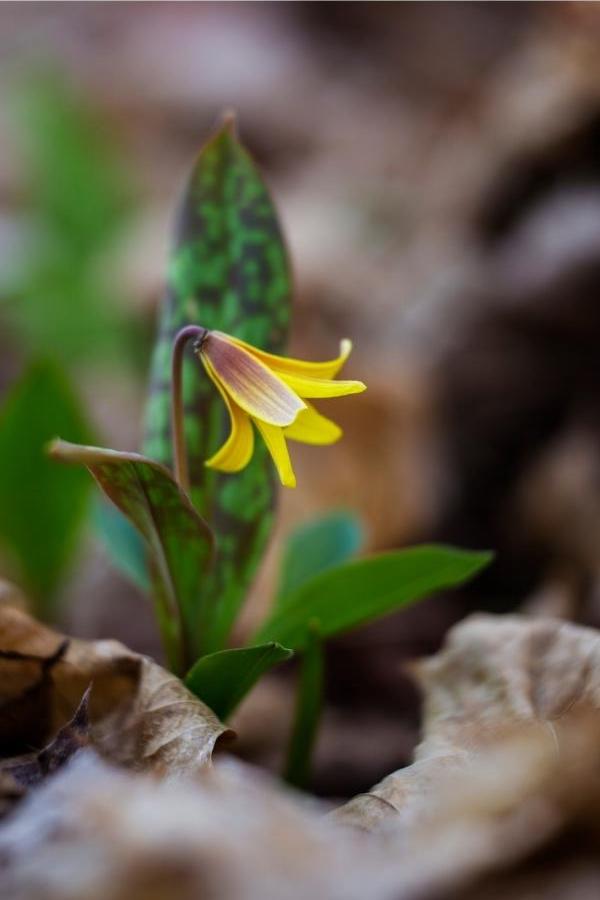
Trout Lily Corms
Probably the tastiest part of the Trout Lily is the corm. The corms are typically tear-drop shaped. They have thin brown skin that peels off easily and white or cream-colored flesh underneath. Their roots are all clustered at the bottom of the corm.
The size of Trout Lily corms varies with species. The Common Trout Lily (Erythronium americanum) has relatively small corms, generally only about 0.8 inches long and 0.3 inches wide. The Glacier Lily (Erythronium grandiflorum) has much larger corms which may be 1.1 to 2 inches wide.
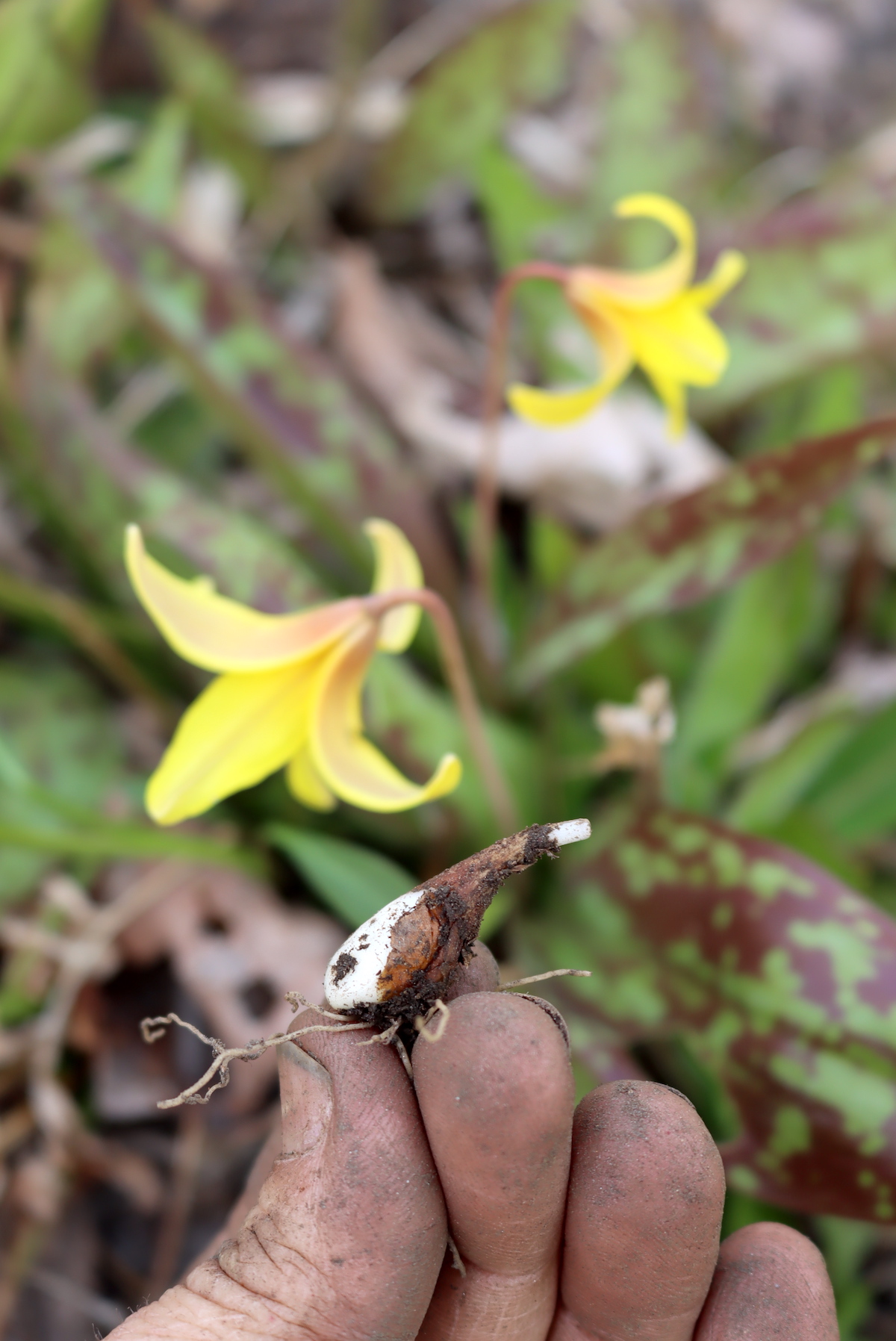
Trout Lily Look-Alikes
Trout Lily is sometimes mistaken for Bluebead Lily (Clintonia borealis). However, Bluebead Lily differs in several noticeable ways:
- Bluebead Lily has up to five leaves that aren’t mottled or speckled.
- Bluebead Lilly blooms later in spring and summer, typically from May to June.
- Bluebead Lillies have multiple blooms per stem, generally between three and six.
Another look-a-like is Canada Lily (Lilium canadense). Fortunately, it also differs in a couple of easy-to-spot ways:
- Canada Lily is tall and may grow to three to eight feet in height.
- Canada Lily blooms in the summer.
- Canada Lily has multiple blooms per stem.
- Canada Lily has a whorl of leaves on its stem.
Finally, Trout Lillies may also be confused with Ramps (Allium tricoccum). You can distinguish them in a few simple ways:
- Ramp leaves are solid green, often with a deep purple or reddish tinge on the lower stem.
- Ramp leaves have a strong garlic or onion fragrance when crushed or broken.
- Ramps produce a single stem with an umbel or small white flowers.
Ways to Use Trout Lily
Trout Lillies are a fun springtime edible, but it’s generally best to use them in moderation, especially if they’re new to you.
In spring, you can gather a few fresh leaves and use them in salads with other greens or as a potherb. They also make a great trailside snack! The flowers can be used similarly, but some find their taste unpleasant.
Trout Lily corms are widely regarded as the best part of the plant. Harvest the corms in early spring for a sweet, crunchy vegetable that can be added raw to salads or cooked in soups, stir-fries, or simply steamed or sautéed with other wild vegetables.
You can harvest the corms later in the year, but they’ll be more starchy than sweet. You can still eat them raw at this stage, but many choose to prepare them roasted or cooked as you would other root vegetables.
Whenever you harvest the corms, you’ll want to remove the thin skin and roots and wash them thoroughly to remove any dirt before preparing them. The corms can also be dried for later use.
Also, be sure to harvest respectfully. When we harvest corms, we kill the entire plant. Overharvesting can be a concern in some regions.
You can use Trout Lily leaves externally as a poultice on minor rashes, wounds, and burns. The aboveground parts of a plant can be used as a tea to treat urinary tract issues, edema, and more. This tea should be used sparingly and with caution.
Trout Lily Recipes
If you’re one of the people who find you enjoy Trout Lily leaves, try this simple Spring Ephemeral Salad recipe from The Forager Chef.
If you’d like to harvest the flowers, you might want to try this sweet Glacier Lily Jelly recipe from Born in the Wrong Century.
You can also use the flowers to decorate a cake like Miss Wondersmith did with this stunning Strawberry Spruce Cake.
Spring Foraging
Looking for more fun spring foraging guides?
- Foraging Morels
- Foraging Dryad’s Saddle
- Foraging Chickweed
- Foraging Ramps (Wild Leeks)
- Foraging Fiddleheads
- 60+ Dandelion Recipes
- Foraging Japanese Knotweed

